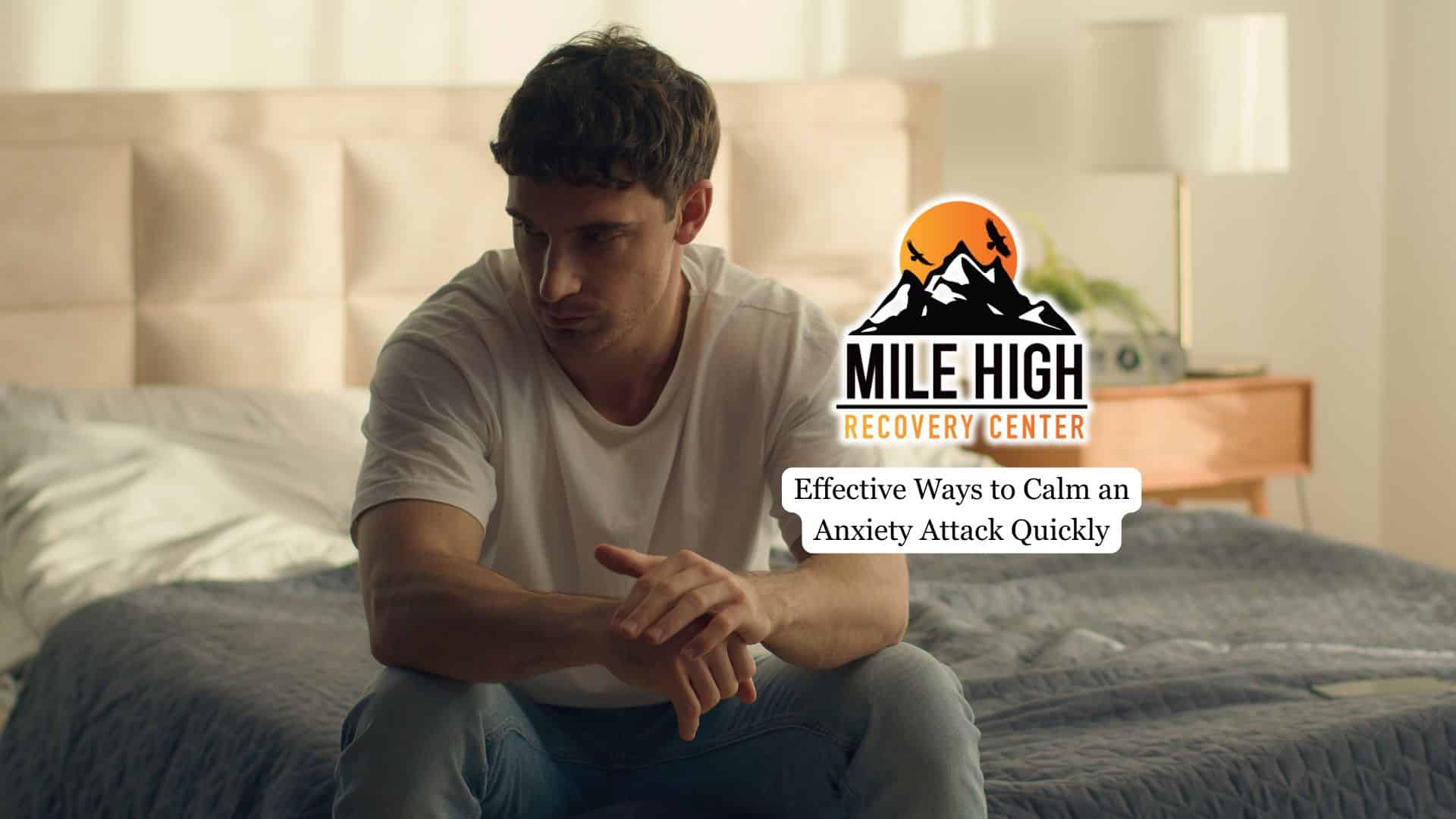Episodes of intense worry can be overwhelming and frightening, often appearing without warning. When they occur, it can feel difficult to regain control. Knowing effective, practical methods to calm an attack quickly can help reduce distress and restore a sense of safety.
This article examines strategies that individuals can employ to manage these moments and alleviate symptoms more effectively.

Recognizing the Signs of an Anxiety Attack
The first step in calming an anxiety attack is identifying what is happening. Common signs include a racing heart, shortness of breath, dizziness, trembling, chest tightness, or a feeling of losing control. These physical and emotional signals are the body’s natural reaction to a heightened stress response.
Recognizing them allows individuals to remind themselves that what they are experiencing, while uncomfortable, is not life-threatening. Understanding this distinction often reduces fear, which makes calming techniques more effective. Naming what is happening allows a person to create distance from the panic and opens the door to recovery. Learning these skills within an anxiety treatment program can provide added guidance and reinforcement, helping individuals respond more effectively when attacks occur.
Focusing on the Breath
Breathing is one of the most powerful tools for calming the body during an episode. When worry sets in, shallow and rapid breaths cause the body to feel even more on edge. Slow, intentional breathing helps restore balance by activating the parasympathetic nervous system. Techniques such as the 4-7-8 method, which involves inhaling for four seconds, holding for seven, and exhaling for eight, can encourage the body to relax.
Others prefer box breathing, which follows a consistent pattern of four counts in, four counts held, four counts out, and four counts held again. Even a few minutes of steady breathing can lower heart rate, ease chest tightness, and restore a sense of control. The more regularly someone practices these methods, the easier it becomes to use them effectively when an attack occurs.
Using Grounding Techniques
Grounding exercises redirect attention away from racing thoughts and back into the present moment. Anxiety thrives when the mind spirals into what-ifs or fears about losing control. A practical strategy is the 5-4-3-2-1 method: identify five things you see, four things you feel, three things you hear, two things you smell, and one thing you taste. This sensory focus interrupts the cycle of worry and reminds the mind that the immediate environment is safe.
Other grounding techniques include carrying a small textured object to hold, splashing cool water on the face, or focusing on the sensation of feet pressing firmly against the floor. These methods create a physical anchor that steadies the mind and body.
Engaging the Body and Senses
Physical movement or sensory engagement can counteract the adrenaline surge that accompanies anxiety. Simple actions, such as stretching, walking slowly around the room, or shaking out the arms, release tension and provide a physical outlet for nervous energy. Engaging the senses is equally powerful.
Listening to calming music, inhaling a soothing scent such as lavender or chamomile, or sipping cold water can shift the body’s focus from worry to comfort. Sensory input provides tangible reassurance, helping the body move away from a state of hyperarousal. These small, intentional steps remind the nervous system that it is safe to slow down.

Repeating Reassuring Thoughts
Negative or catastrophic thinking often fuels these episodes. The mind may insist that something terrible is happening or about to happen, intensifying fear. Replacing these thoughts with calm, rational reminders can help reduce mental distress. Reassuring statements such as “This will pass,” “I am safe,” or “My body is simply reacting to stress” reinforce the temporary nature of the experience.
Repeating affirmations in a calm voice, whether aloud or silently, helps redirect the mind away from fear and toward a more positive state of mind. When paired with deep breathing or grounding exercises, these reminders become even more powerful, creating a steady rhythm of reassurance that supports recovery. Having a supportive network or relapse prevention plan further strengthens these efforts, as encouragement from trusted individuals can reduce the likelihood of returning to unhealthy coping patterns when distress feels overwhelming.
Seeking a Calming Environment
Moving to a quiet space with fewer distractions can help reduce pressure on the senses. Dimming bright lights, lowering noise levels, or stepping outside for fresh air often encourages the body to relax.
Some people find comfort in creating a personal calming space at home with soft lighting, relaxing scents, or comfortable seating. Whether temporary or intentional, creating a calming environment enhances the effectiveness of other coping strategies and facilitates the body’s recovery process more smoothly. In therapeutic settings, approaches such as Dialectical Behavior Therapy (DBT) are also used to help individuals develop skills for managing overwhelming moments in challenging environments, blending structured techniques with practical coping methods.
Final Thoughts from Mile High Recovery
Anxious episodes can be distressing, but knowing effective ways to calm them quickly offers both relief and confidence. Through combining strategies such as controlled breathing, grounding exercises, sensory engagement, and reassuring self-talk, individuals can regain control and reduce the intensity of symptoms in the moment. These techniques are practical, accessible, and can be used anywhere, making them valuable tools for anyone coping with strong stress responses.
At Mile High Recovery, we understand the challenges that come with managing these conditions. Our anxiety treatment program in Colorado provides structured treatment and supportive therapies that help individuals not only cope with episodes but also address the underlying causes. With evidence-based care and compassionate guidance, we offer resources that empower individuals to build long-term stability and well-being.







